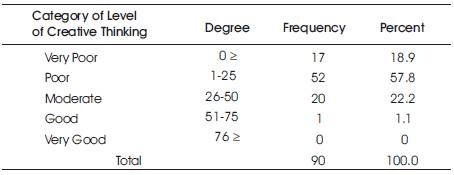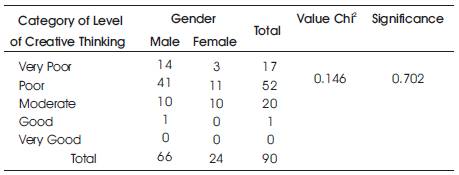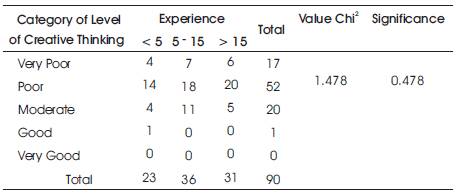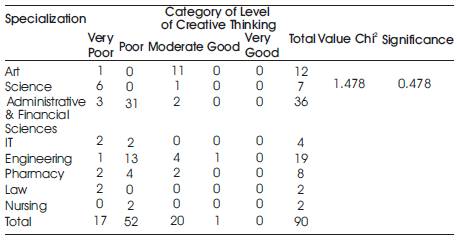
Table 1. Learning Stages and Teaching Styles Prevailing in the Second Decade of the Twenty First Century
This article attempts to probe the level of creative thinking of teachers at Philadelphia University in Jordan, and to define its relation with several independent demographic variables, namely age, gender, duration of experience, specialization, and personality types and traits. To accomplish this purpose, three questionnaires are administered on a randomly-chosen sample of (90) teachers at Philadelphia University, Jordan.
Findings point out that personality traits included in the study are found available in teachers of Philadelphia University at meager proportions. They can be arranged according to degree of availability in the following descending order: amiable, persevering, savvy, courageous and daring, intelligent, insightful, dynamic and active, and independent. The level of creative thinking of teachers at Philadelphia University is found to be somewhat moderate. Besides, there is no statistically significant relation between the creative thinking of teachers studied and each of the following demographic variables: gender, age, experience, and personality types. Specialization and amiability are concluded to affect the level of creative thinking: the first positively and the second adversely. The other personality traits studied are not available in proportions that considerably affect the level of creative thinking of teachers. As for personality types, they were found to be mainly Epimetheans and Apollonians. Several conclusions and recommendations concerning the teachinglearning environments and processes are outlined.
In the current highly-intricate and ever-changing digital world, the potential success of higher education institutions balancing their desired objectives are very much debated. They prioritize either developing the intellectual abilities of students, or meeting societal needs of performance skills required for the execution of the consecutive national economic and development plans. Achieving a balance between priorities is quite feasible through the highly developed creativity of teachers as manifested in the creative methods of instruction adopted, and reliance of educational behavior upon several personal factors, including creativity quotient and the soft programs available.
Creativity, which is considered a core requirement for happy life in the twenty-first century, refers to the ability of restructuring knowledge in novel ways, and exploring relations among ambiguous and apparently different objects, features and phenomena. It involves insightful handling of issues encountered, and exploring new approaches to accomplish novel solutions. Soft programs refer to all information kept in the long-term memory, including all scientific and cultural legacy governed by the rules of learning.
Contingent upon such concepts, the European Parliament declared 2009 as the year of creativity and innovation. It called for paying more attention to such key drivers of personal and community development.
Researchers tried to delineate creativity, probing its correlation with education, investigating methods to nurture it, exploring means of teaching with creativity and for creativity, and developing proper levels of students' adaptability skills to ensure accomplishing effective roles in the workplace.
From these basic concepts emanated hot debates concerning the characteristics of creative teaching. There is consensus on certain characteristics of creative teaching as being motivating, engaging, inspiring, and focusing on effective communication skills and high expectations. To be creative, teachers require ample broad knowledge in relevant fields of study, as well as suitable techniques and creative thinking to stimulate the curiosity of students and motivate their self-confidence.
In the twenty first century, focusing on the role of teachers as being the sole source of knowledge has been replaced by prioritizing the role of students in effective learning situations with the objective of acquiring creative and problemsolving strategies of thinking. Modern institutions of higher education put emphasis on interactivity, diversity, flexibility, risk-taking, connectional intelligence, collaboration, interdisciplinary, and promotion of divergent thinking. Competitiveness, emphasis on rote learning, and refusal of mistake-committing are considered absolute adversative phenomena of the creative thinking of teachers. Connectional intelligence is the ability to combine knowledge, ambition and human capital to create value and meaning.
This article attempts to probe the levels of creative thinking adopted by University teachers in Jordan, taking Philadelphia University as a prototype. If teachers prove to adopt creative thinking in Education processes, then methods of instruction adopted, strategies of divergent thinking propagated, and objectives targeted will assuredly being engaged and creative. If not, then certain measures like awareness programs on creative thinking should be implemented, and teachers' training courses on the subject of creativity should be stipulated.
Pedagogy has always advocated the objective of teaching for creativity, that is graduating students with high levels of creativity. But such creativity cannot be achieved by teachers who are not creative themselves and do not teach with creativity. So the paradigms of education have recently been changed from teaching for creativity into teaching with creativity. This requires that teachers should understand the concepts of creativity and creative thinking.
Creative people form (5% - 7%) of any social stratum in any country. This issue originate such exclamatory questions as where such people are in the Arab world, and why they don't have any impact on Arab societies. If not muffled by societal nets, the majority of creative people in the Arab world mainly exhibit such creativity in the domains of literature and arts. Even upon choosing scientific fields of study, they seem to prefer applied sciences like Medicine and Engineering that secure immediate personal profits, or a sort of cash in a flash strategy ( Al-Fuqaha, 2000).
Education systems are the instruments adopted to overcome the obstacles that hinder creativity and creative thinking from flourishing. In an age of intellectual capital in the second decade of the twenty first century, a revolt to change Arab Education paradigms seems mandatory to encourage innovative initiatives to salvage the Arab world from stumbling into chaos, by adapting the cultural legacy in a way that suits the prevalent situations. Among other aspects, there is a dire need to develop the ability of creative thinking of teachers in order to achieve the goal of producing creative graduates and ensure teaching with creativity instead of just teaching for creativity.
Creative teaching may be defined in two ways: teaching creatively and teaching to develop creativity in learners. Teaching creatively might be described as using imaginative approaches by teachers to make learning more interesting, engaging, exciting and effective. Teaching for creativity might be described as best using forms of teaching that are intended to develop students who have low levels of creative thinking and behavior ( Morris, 2006, p.4). Teachers have a vital role in developing the creativity of their students. Such a task can't be achieved without being creative themselves.
This article focuses on the dire need for more research in the field of creative thinking, teaching and learning. It tries to probe teachers' experiences in utilizing creativity in curricula delivery. Specific research questions are posed with the final end of accomplishing the ever-changing philosophy of education of preparing the modern human being who can think by himself, for himself and for others, and who is capable of facing the world issues in effective modes.
If teachers have low levels of creative thinking, then they may feebly be able to perform teaching for creativity, but not teaching with creativity. This seems an essential basis of pedagogy in the second decade of the twenty first century, which has rightly been depicted as " an age of intellectual capital".
This descriptive analytical study tries to survey the levels of creative thinking of the teachers in Jordanian Universities, exemplified by Philadelphia University, and explore the relation between such levels and certain independent demographic variables. It focuses on probing the following:
The present study emanates from the following hypotheses:
In the search for quality education in India, Sugara Mitra said that, “the schooling system engineered by the Victorians produce identical people for a currently nonexistent world. It has become outdated in today's connected world. Hence the need for new processes and creative learning environments in order to develop effective edutainment” ( Mitra, 2010).
Creativity is an essential life skill that needs to be fostered by all Education Systems. The pedagogical practices which enable teachers to support, implement and enhance the development of creativity, while adhering to the performance agenda and its quality standards, remain complex issues. The majority of literature on creative teaching practices stresses the need to make explicit the concept of creative thinking and how it impacts creative learning ( Craft, 1999, p. 137).
The conceptual framework of this paper comprises an overview of types of creativity, characteristics of creative persons, development stages of creativity, and the correlation n between creativity and creative thinking on the one hand and personality types and traits on the other. According to process, Taylor suggested five types of creativity: expressive, productive, inventive, innovative, and emergentative creativity ( Taylor, 1972).
According to product ( Al Rakhawi, 1991), two broad types of creativity are identified: the first is communicative including artistic, literary, expressive, and performance, and the other is inventive based upon the aggression instinct, and includes inventive and emergentative creativity.
The creative personality is characterized by activity and dynamism, courage, perseverance, savvy, and insight. Performance of creative people has much originality, flexibility, fluency, and insight. Level of Intelligence (IQ) required for a creative personality is generally (≤ 109). Vincent Ruggiero pointed out that, “the creative person is generally characterized by being active and dynamic, independent, courageous, diligent, and practically intelligent” ( Ruggiero, 1988).
Stages of creativity development can be summed up as follows:
This implies that the university age coincides with a flourishing creativity period. The stages of the creative process are preparation, incubating, illumination, and verification ( Stein, 1975).
Creative thinking is a general mental ability. It forms a construct of fluency, flexibility, originality, sensitivity to problems, and insight upon collaboration with others or dealing with things or ideas. Creative thinking is a sort of constant and relentless dispute between two contradicting poles: culture and will of choice of the individual versus collective ideology or social culture. The first denotes internal freedom and indigence considered as the mother of creativity, while the other signifies the margin of external freedom regarded as the father of creativity. The tenser such a dispute will be the higher the level of creative thinking.
Creative processes comprise of imaginative concepts aiming at generating novel and valuable outcomes, or purposeful behavior directed to achieve planned objectives. The basic abilities conducive to innovation can be summed up as follows: definition of problems in novel ways, clear analysis and presentation of ideas, understanding information in context, overcoming barriers of achievement, risk-taking, search for selfimprovement, toleration of ambiguity, allocation of sufficient time to work, and open-mindedness to errors ( Sternberg, 2003).
Creative teaching practices have certain indicators, like the ability to conform with the learning-teaching situations, including students' methods of learning to achieve the desired objectives. That takes into consideration the necessity to restructure objectives and methods of evaluation to secure conformity with the new concept of problem-solving education. Creative teachers are likely to: question and challenge, make connections and see relationships, see possibilities, explore ideas and options, and reflect critically on ideas, actions and outcomes ( Morris, 2006, p.4).
Dhawan & Joni (2015) advocated the edutainment type of education, which focuses on creative thinking and connectional intelligence. They said that the most important factor in education is not the presence of a teacher (any teacher), but the interest and curiosity that can be aroused in a student.
In a previous study, Al-Fuqaha concluded that creative University students in Jordan are mainly of the ‘Promethean personality type’ interested in Information Technology and contemplation. These usually adopt the conceptual specific style of learning. They can also be of the ‘Appolonian type of personality’ interested in broad classified emotions. These usually adopt the conceptual global style of learning ( Al-Fuqaha, 2000).
Teaching processes are distributed among three approaches: Transmission Pedagogy, Generative Pedagogy, and Transformative Pedagogy.
The transmission pedagogy takes a one-way form transmitting cognitive abilities from the teacher to the student. This approach is usually linked with entrainment.
The generative pedagogy provides learners with the functional power needed to accomplish definite tasks in the work place, as it was demanded in the industrial age. This approach is linked with entrainment and infotainment.
Transformative generative pedagogy stresses the acquisition of cognitive, psych-motor, and affective social abilities. It depends on systems thinking, problemsolving thinking, and creative thinking. This approach is linked to edutainment.
Understanding thinking styles of teachers and learners, and linking them to the personality types form the starting point of formulating the creative style of thinking suitable for the present age.
The learning processes of students differ according to their personality types. The Dionysian personality type (Artisan) adopts the concrete spontaneous style of learning. The Epimethean personality type (Guardian) adopts the concrete routine style of learning. The Promethean personality type (Idealist) is usually characterized by using the conceptual specific style of learning. The Apollonian personality type (Rational) uses the conceptual global style of learning. So defining the personality type, (according to David Keirsey) means outlining the learning styles ( Keirsey, 1998).
According to technology used in pedagogical processes, three learning stages and teaching types prevail in the second decade of the twenty first century as shown in Table 1 ( Al-Fuqaha, 2014).

Table 1. Learning Stages and Teaching Styles Prevailing in the Second Decade of the Twenty First Century
Both mobile and pervasive learning require teachers with high levels of creative thinking. They can effectively utilize human and device elements to achieve blended synchronous and asynchronous teaching.
The group of teachers studied consists of the teachers working at Philadelphia University, Jordan during the academic year 2014 - 2015. The population of the society studied amounts to 271 teachers, distributed as shown in Table 2. The sample randomly chosen consists of 90 teachers. The sample taken into consideration is around 33.2% of the whole population. All respondents who didn't answer fully all items included in the three questionnaires were excluded from the statistical analysis.

Table 2. Distribution of the Group Studied and the Sample Chosen
The tools adopted in the current study consist of three questionnaires:
All questionnaires, available at Al-Fuqaha's website, were translated into Arabic and customized by Al-Fuqaha (Al- Fuqaha, 2002). Feedback taken from referees was taken into consideration.
The calculation of results in the first and second questionnaires are self-explanatory, while in the third, one mark is given for affirmative (Yes answers to items 2, 4, 6, 8, 9, 10, 12, 14, 16, 18), as well as for negative (No answers to items 1, 3, 5. 7, 11, 13, 15, 17, 19, 20). Incorrect answers are given (-1), while ‘Don't know’ is given as nil.
All data are collated and processed using (SPSS) program.
The society studied is surveyed, divided into strata according to faculties, and a sample is randomly chosen.

Table 3. The Validity of the Questionnaires Using Cronbach's Alpha
The personality types are not quantitative, so they cannot be included among the variables mentioned earlier.
The sample of the study distributed according to gender, age, experience, specialization, and personality types are shown in Table 4.

Table 4. Distribution of the Sample of Study according to gender, age,experience, specialization, and personality type
The relation between the personality traits of teachers and the dependent variables together with mean and standard deviation are shown in Table 5.

Table 5. The Relation between the Personality Traits of Teachers and the Dependent Variables
Testing the variable of personality traits shows that two traits were available at a good level: amiable (4.3056), and persevering (4.1194). The other traits were available at a moderate level: savvy (3.9750), courageous and daring (3.8259), intelligent (3.6694), insightful (3.6667), and independence (3.1028). The general average of availability of all traits is (3.7733) with a standard deviation of (0.56822).
The levels of creative thinking of teachers were as illustrated in Table 6. Only 23.3% of the whole sample have reasonable levels of creative thinking. This leads to question the possibility of teaching with creativity by teachers who lack such a type of thinking.

Table 6. Categories of Levels of Creative Thinking Adopted by Respondents
The first hypothesis states that there is no statistically significant relation between personality types of teachers at Philadelphia University, Jordan and the following demographic variables: gender, age, experience, and specialization.
Using crosstabs (Chi2 0.05 means significance of relation, the first hypothesis propounding that there is no significant relation between personality types (Dionysian, Epimethean, Promethean, Apollonian) and any of the following demographic variables: gender (sig. 0.406), age (sig. 0.352), experience (sig. 0.503), specialization (0.999) was found to be true, as the value of Chi2 ≤ 0.05 denotes the existence of a relation, but if the value is more, it denotes that no statistically-valid relation exists.
Tables 7, 8, 9 show the values of Chi and significant in relation to each variable, taking into consideration that the Dionysian personality type has been discarded as none of the respondents was of the type.
Table 7 focuses on the variable of gender. It shows that there is no statistically significant relation between personality types and gender (sig. 0.406).

Table 7. The Relation Between Personality Types and the Variable of Gender Using Crosstabs
Table 8 focuses on the variable of age. It shows that there is no statistically significant relation between personality types and age (sig. 0.352). That means that a person cannot be of a certain personality type at one point of his life, and changes according to age.

Table 8. The Relation Between Personality Types and the Variable of Age Using Crosstabs
Table 9 clarifies that there is no statistically significant relation between personality types and experience (sig. 0.503). Personality types don't change due to the number of years of experience.

Table 9. The Relation Between Personality Types and the Variable of Experience Using Crosstabs
As for the variable of specialization and its relation to personality types, the study concludes that there is no statistically significant relation between personality types 2 and specialization. Value Chi was found to be (3.245), and significance (0.999).
The second hypothesis states that the level of creative thinking doesn't differ as a result of the following personality types: Dionysian, Epimethean, Promethean, and Apollonian.
Using One Way ANOVA, Table 10 shows that there is no statistically significant relation between personality types and the level of creative thinking. The value of ‘F’ is 0.208 with a significance level of (0.813) which exceeds (0.5). That means that creative people can be of any personality type.

Table 10. One Way ANOVA – Relation between Creative Thinking and Personality Types
The third hypothesis states that personality traits of the creative teachers (dynamic and active, courageous and daring, persevering, insightful, independent, savvy, intelligent, amiable) do not significantly affect the level of creative thinking.
Using multiple regression (Y= a + bx), the personality traits included in the study were found to be available at proportions that cannot impact the levels of creative thinking. F value was (0.898), significance (0.522), R (0.285), R2 (0.082), adjusted R2 (-.009), Standard error of the estimate (3.34458). One trait, namely amiability, proved to be available at a proportion that has adverse effect on the level of creative thinking. R2 was (0.82), which means that it explains (8.2%) of change in the level of creative thinking.
The fourth hypothesis states that there is no significant relation between levels of creative thinking of teachers at Philadelphia University, Jordan and the following demographic variables: gender, age, experience, and specialization. The crosstabs statistical procedure has been adopted to explore Chi2 . If found to be ≤ 0.05, that indicates a significant relation. If not, there is no relation.
Gender: The study indicates that there is no significant relation between levels of creativity of teachers and gender, as shown in Table 11. That means neither males nor females can allege to be more creative than the other gender.

Table 11. Relation between Level of Creative Thinking and Gender
Age: The study indicates that there is no statistically significant relation between levels of creativity of teachers and age, as summarized in Table 12. The levels of creativity do not flourish or decay with the progression of age.

Table 12. Relation between Level of Creative Thinking and Age
Experience: The study indicates that there is no statistically significant relation between levels of creativity of teachers and experience, as shown in Table 13. Number of years of experience hasn't a distinct relation whatsoever with levels of creativity of teachers.
Specialization: The study indicates that there is a statistically significant relation between levels of creativity of teachers and specialization, as shown in Table 14. Teachers proved to be mainly of poor and moderate levels of creative thinking, with the faculty of arts and Faculty of Engineering showing a higher percentage of moderate levels of creative thinking.

Table 13. Relation between Level of Creative Thinking and Experience

Table 14. Relation between Level of Creative Thinking and Specialization
So the first hypothesis of the study stating that there is no significant relation between personality types of teachers at Philadelphia University, Jordan and the following demographic variables: gender, age, and experience is partially accepted. The only variable that proved to significantly affect creative thinking is specialization.
The second hypothesis states that the level of creative thinking doesn't differ according to the following personality types: Dionysian, Epimethean, Promethean, and Apollonian. This hypothesis proved to be accepted.
The third hypothesis states that personality traits of creative teachers (dynamic and active, courageous and daring, persevering, insightful, independent, savvy, intelligent, amiable) do not significantly affect the level of creative thinking. This hypothesis proved to be partially accepted. The only personality trait that significantly affected the level of creative thinking is amiability.
The fourth hypothesis states that there is no statistically significant relation between levels of creative thinking of teachers at Philadelphia University and the following demographic variables: gender, age, experience, and specialization. The study pointed out that specialization is the only variable that significantly affected the level of creative thinking,